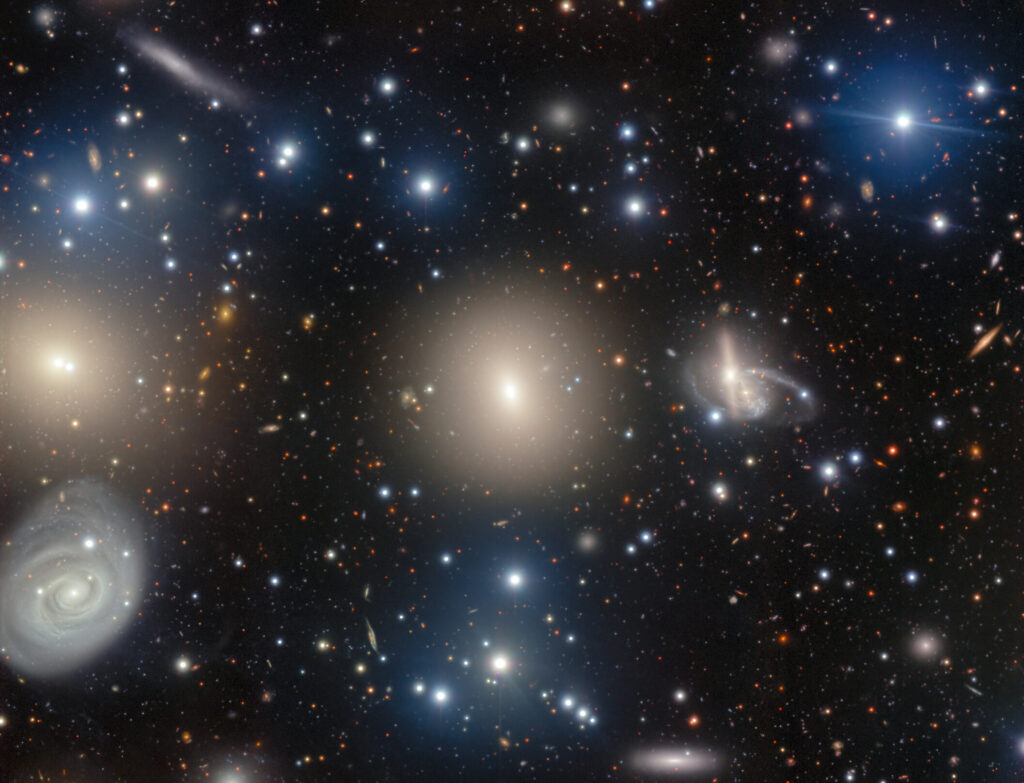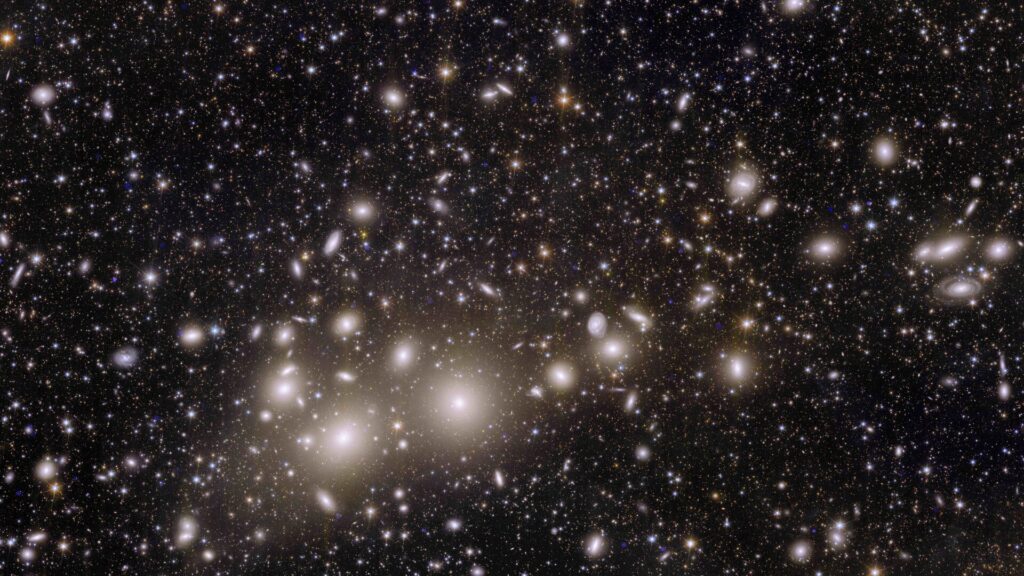Employees of the NOIRLab science center shared a very spectacular image obtained by the Gemini North telescope. It shows part of the Perseus cluster, a huge “galactic archipelago” located 240 million light-years away from Earth.
Island Universe and Great Debate
The elliptical galaxy NGC 1270 dominates the center of the image. Its “soft” glow is explained by the fact that star formation processes have practically ceased in it, and it is mostly populated by old stars. But although the galaxy may seem like an island drifting in the vast cosmic ocean, this object is part of something much bigger than itself. NGC 1270 is just one of the small bricks that make up the Perseus Cluster. It is one of the most massive objects in the Universe, containing thousands of galaxies in a huge cloud of gas with a temperature of millions of degrees.

Looking at this image, it seems amazing that, with NGC 1270 being discovered (it happened in 1863), it was not widely believed that other galaxies existed at all. Many objects believed to be galaxies today were then called nebulae because of their cloudy, amorphous appearance. The idea that they are formations similar in size to our Milky Way, or “island universes,” as Immanuel Kant called them, has been proposed by several astronomers throughout history, but has not been proven. Instead, they were usually thought to be smaller objects on the outskirts of the Milky Way, which made up most or all of the Universe.
The nature of these mysterious objects and the size of the Universe became the subject of the famous Great Debate, held in 1920 between astronomers Heber Curtis and Harlow Shapley. The debate remained unresolved until 1924, when Edwin Hubble was able to measure the distance to stars in certain “nebulae” to calculate how far they were from Earth. The results were decisive: they were far outside the Milky Way. Astronomers’ view of the cosmos has changed dramatically. It turned out to be populated by countless strange, distant galaxies as large and complex as our own.
Mystery of dark matter
As telescopes advanced, astronomers were able to get a better look at these “island universes” to see what they might be like. For example, researchers noticed powerful energy emissions from the heart of NGC 1270, and hypothesized that it contained a supermassive black hole. This feature is observed in about 10% of galaxies and is detected by the presence of an accretion disk, an intense vortex of matter orbiting the central black hole and gradually being absorbed by it.

But astronomers are interested in more than just individual galaxies. For example, the fact that giant clusters like Perseus exist at all indicates the presence of a mysterious substance called dark matter. If it didn’t exist, galaxies would be more or less evenly distributed through space, rather than gathered in dense groups. According to current theories, the invisible web of dark matter attracts galaxies to each other at the intersections of its colossal filaments, where its gravity is strongest.
Although dark matter is used to explain the existence of cosmic structures, the nature of the matter itself remains a mystery. Looking at such images, we can only wonder what other mysteries astronomers will be able to reveal, and how much more we will know about the Universe a century from now.
Provided by NOIRLab


